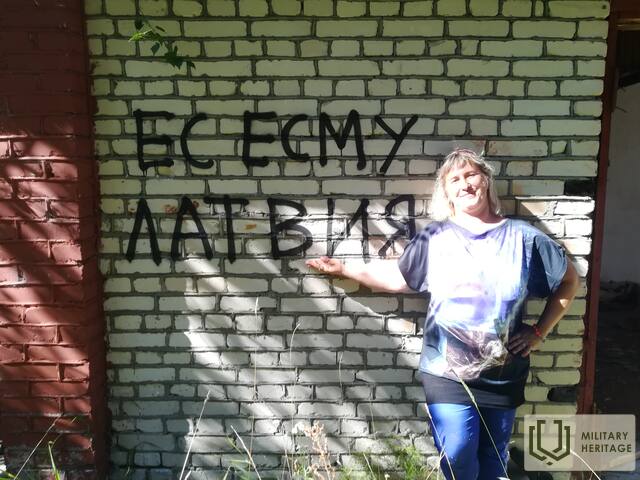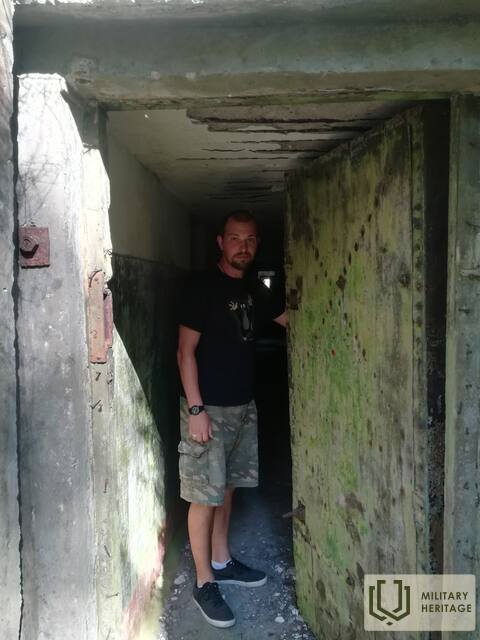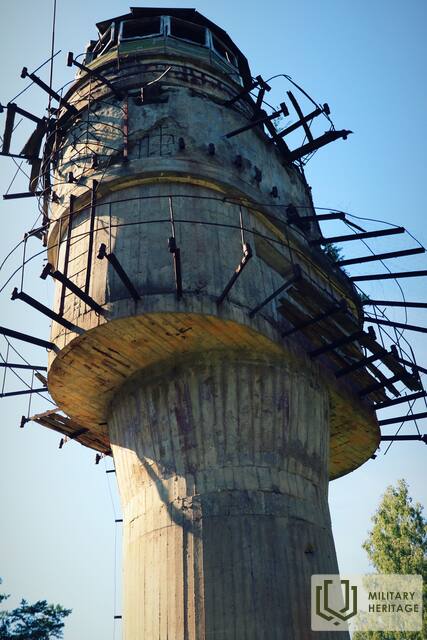Krasnoflotsko likimas po sovietų pasitraukimo
1993 metais Latviją palikus paskutiniams sovietų kariams, Latvijos krašto apsaugos pajėgų žinią pateko ir Krasnoflocko arba Olmani pakrančių gynybos baterija. Netrukus bešeimininkį turtą pradėjo konfiskuoti pelno siekiantys ieškotojai.
1993 metais kariuomenė pasitraukė iš Olmani, pasiimdama raketas ir sviedinius. Visa kita – pastatai, įranga ir kiti daiktai – buvo perduoti Latvijos vyriausybei. Kurį laiką Latvijos namų gvardija saugojo kariuomenės miestelį. Latvijos NBS svarstė pakrantės gynybos bateriją pasilikti, kad ateityje ją būtų galima naudoti ir mokymams, ir gynybai. Tokios pakrančių gynybos baterijos egzistavimas suteiktų Latvijai karinę Irbenės sąsiaurio kontrolę ir užtikrintų stiprią gynybą politinio eskalavimo atveju. Tārgalės parapijos taryba taip pat primygtinai reikalavo, kad vieta būtų išsaugota turizmui. Tuometinis parapijos tarybos vykdomasis direktorius Ivaras Smukkalns ne kartą kreipėsi tiek į regiono, tiek į nacionalines institucijas, prašydamas patikėti teritorijos tvarkymą vietos savivaldybei. Visa Europa būtų atėjusi apžiūrėti unikalios pakrančių gynybos baterijos, kaip dabar europiečiai atvažiuoja apžiūrėti Sveaborgo tvirtovės, kurioje taip pat saugomi rusiški pabūklai ir kuriai suteiktas UNESCO pasaulio paveldo statusas.
Deja, nė vienas planas nebuvo įgyvendintas dėl pinigų stygiaus, o pakrantės baterija buvo palikta likimo valiai, o kariuomenės miestelį ir patrankas kurį laiką prižiūrėjo kultūros ir istorijos entuziastai Edgars ir Zoja Sīliai. Tačiau 200 tonų pirmos klasės metalo nedavė ramybės vagims ir vandalams. Miestelio turtą ir turtą išgrobstė marodieriai, kurie apiplėšė ir pasienio postą Irbės upėje. Patys pabūklai sugebėjo išsilaikyti savo pozicijoje dar trejus metus, tačiau 1996-aisiais taip pat buvo atiduoti į metalo laužą. Po juodo metalo vagys atėjo kabelių vagys, buvo išmontuoti galingi dyzeliniai generatoriai, pakeistas tolimatis, kariniai ekspertai pavogė formules ir brėžinius. 2006 metais du neblaivūs asmenys, neatsargiai elgdamiesi su ugnimi, padegė kareivines. Abu žuvo gaisre. Iš kareivinių liko tik mūrinės sienos. Unikalus karo istorijos palikimas buvo sunaikintas ir apleistas. Dabar į ją užklysta tik retas karo istorijos entuziastas.
Olmanai. Akumuliatorius Nr. 456 (diggers.lv)
Susijusi laiko juosta
Susijusios vietos
Olman Battery No.456 (Soviet military base "Krasnoflotska")
The first coastal defence batteries for the defence of the Irbe Strait were built after 1912, when the Baltic Fleet Mine-Artillery Defence Position Plan was approved, which included several coastal defence batteries and sea mine-laying.
The Irbe Strait position was the furthest south, and its task was to block any enemy access to the Gulf of Riga. The main emphasis was on sea mines, tens of thousands of which were laid in the Irbe Strait during WWI by ships of the Baltic Fleet. It was not until 1916 that coastal defence batteries began to be built on the southern tip of the island of Saaremaa, Cape Sorve. Seven batteries were built in total, and Battery 43 was equipped with 305 mm guns. No defence batteries were built on the Latvian coast of the Irbe Strait.
Even after the establishment of the Republic of Latvia, the Latvian army and navy did not establish artillery positions to defend the Irbe Strait.
The situation changed after the mutual assistance pact between the Republic of Latvia and the USSR of 5 October 1939, which provided for a contingent of the Red Army and the Baltic Naval Fleet to be stationed in Kurzeme. Soviet plans also included the establishment of a coastal defence system based on the 1912 plan, with improvements. The plan was to build coastal defence batteries on the site of the Liepaja fortress, with new batteries south of Ventspils (Battery No 46) and two batteries in the narrowest part of the Irbe Strait near Mikeltornis. Already after the occupation and annexation of Latvia, the coastal defence plans of the Baltic Navy were supplemented and by June 1941 the 207th Artillery Division with five batteries was planned to be established in the northern part of Kurzeme. Two batteries were to be set up in the vicinity of Mikeltornis - Battery 40 at Lūžņa with 130 mm B-13 guns in reinforced concrete fortifications, and Battery 117 at Olmani (a place designated on Latvian army maps as Ķesteri) with 152 mm MU-2 guns. As the development of the 152 mm guns was not completed, temporary wooden platforms were built on the reinforced concrete fortifications of the battery and four more 130 mm guns were installed. Both batteries were completed by June 1941, but the batteries could not be traced in the war against the German 291st Infantry Division, and their crews moved to the island of Saaremaa.
At the end of WWII, the German Army Group "Courland" was quite serious about possible Soviet landings in northern Courland, especially after the ice melted in the Gulf of Finland and on the west coast of Estonia. Improvised coastal defence batteries were deployed all along the Kurzeme coast. The Soviet Battery No 40, Gerate Batterie Sommer of the 289th Artillery Division with two 122 mm Soviet howitzers, was stationed in reinforced concrete positions near Luzhne. In the area of Battery 117's position was Battery 2 of the 530th Artillery Division with three 152 mm Soviet trophy guns, three 37 mm zenith drones, one 20 mm four-barrel zenith drones, two 75 mm anti-tank guns and two mortars for illumination.
After the end of active hostilities in May 1945, the USSR began to rebuild the coastal defence system on the Kurzeme coast. In the autumn of 1945, a temporary Battery 456 with 152 mm guns of the Kane system was deployed near the Olmaņi farm, which was renamed "Krasnoflotskaya".
In 1952, the temporary guns of the battery were replaced by the latest 152 mm MU-2 weapon systems. The battery consisted of four reinforced concrete gun emplacements, a reinforced concrete command post with a range-finder turret and technical buildings. The construction of the battery was completed in 1958.
In 1958, after the dismantling of the Lūžņa coastal defence battery, it was replaced by a mobile 130 mm SM-4-1 gun Battery No 343. The mobile guns did not have reinforced concrete gun emplacements, but several log and sand structures were built.
Battery 343 operated until the early 1960s, and Battery 456 until 1975, when it was preserved. The battery positions were used to deploy S-125 air defence missile complexes, as well as the 10th Coastal Defence Artillery-Missile Regiment with CP-2 Sopka missile complexes, and the infrastructure was modified accordingly.
The Soviet Army transferred the infrastructure of the Olmaņi and Lūžņa batteries to the Republic of Latvia in 1993.










